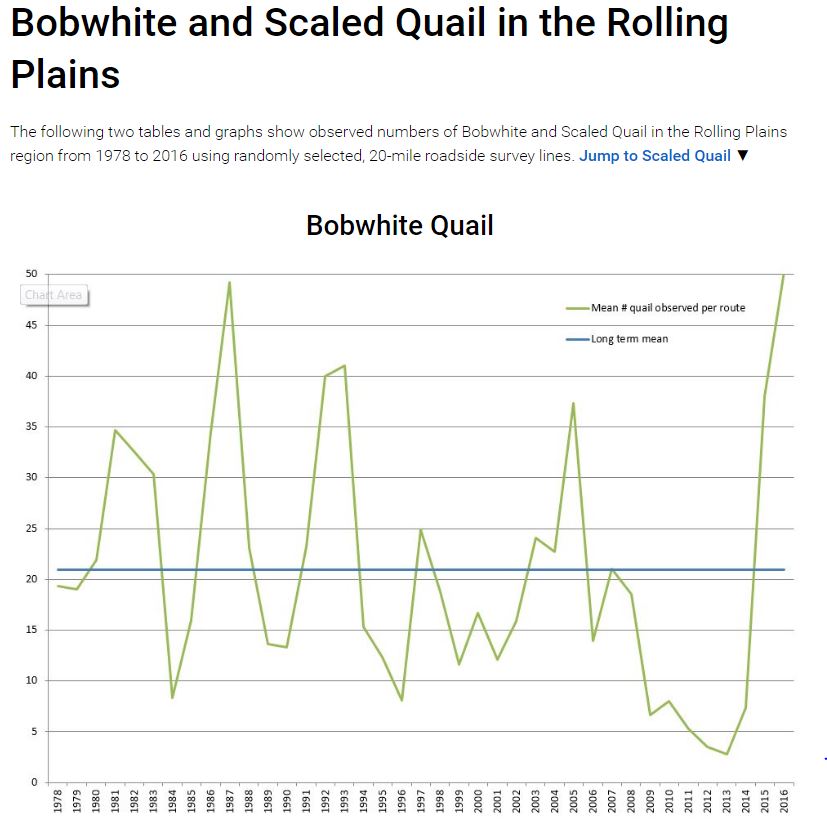Bobwhite quail: You either got ’em or you don’t. It’s that simple. Fortunately, the Rolling Plains and South Texas Plains of Texas have them this year!
Quail hunting in Texas comes and goes with bird populations. Although having areas where suitable habitat exist is paramount, precipitation plays a key role in the annual boom-bust cycle when it comes to annual quail production, especially in semi-arid regions such as the Rolling Plains and South Texas.
Quail Population Sets Record in Rolling Plains
Texas Parks and Wildlife Department (TPWD) biologists conduct quail surveys in Texas each year in late summer. The census has been done since 1978, but it was this year that produced the highest average in the Rolling Plains of Texas, 50.2 birds per survey line.

TPWD personnel count birds by driving 20 mile routes in early morning, when bobwhite quail are most visible. The long term average for the Rolling Plains Region is 20.16, and the previous record was 49.25, in 1987. So it’s been a while, but good news for quail and quail hunters.
But it always wasn’t so rosy. During an extended drought, the Rolling Plains quail survey counted a record low of 2.91 birds per census line in 2013. That’s just a few years ago! Fast-forward to today, after two growing seasons that provided excellent rainfall, and quail numbers in the Rolling Plains have gone from worst to first. Quail are a boom-bust species, so the boom is on.
South Texas Quail Hunting Still Good
Most of South Texas had great quail hunting last season with good outings reported right up to the end of the season. Spring-summer nesting was reported across the region but field observations of broods were mixed this year. Weather conditions were variable along with nesting and brooding activity in the later summer months.
Despite differences in production, the sheer number of quail surviving from last year coupled with even minimal reproduction will likely make for an another good quail year. The average number of bobwhites observed per route was 14 compared to 21 last year. This suggests a slightly below average hunting season for South Texas as a whole, but I wouldn’t sit at home.
The Chaparral and the Daughtrey Wildlife Management Areas provide public quail hunting opportunities. Staff surveys on the Chaparral WMA recorded above average numbers of bobwhite on the area again this year. Buy an APH permit and go!
Texas Quail: Hunting for Birds Elsewhere
TPWD surveys indicate that bobwhite numbers have fallen below average in the Gulf Prairies where only 3.8 bobwhites were observed per route in 2016 compared to 14.9 last year. Although there was good carryover of adult birds along the coast, bobwhite nesting was likely adversely affected by too much rainfall in this region.
Despite a lower estimated population in this region, field reports suggest there are huntable populations of quail on well-drained sites. Hunters should focus on the central and lower coast in native prairie habitats.
The High Plains and Edwards Plateau of Texas reported a general, continued increase quail numbers. Although there are certainly areas within each region of Texas where some quail hunting opportunity remains, this survey is not designed to detect changes in localized populations, especially in fragmented landscapes.